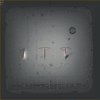Safety of intrauterine devices in MRI
- PMID: 30300364
- PMCID: PMC6177157
- DOI: 10.1371/journal.pone.0204220
Safety of intrauterine devices in MRI
Abstract
Objectives: The paucity of safety information on intrauterine devices (IUD) for magnetic resonance imaging (MRI) examinations is clinically relevant. The aim of this study is to evaluate the MRI safety of clinically used IUDs composed of copper/gold and stainless steel at 1.5T and 3.0T.
Materials and methods: We assessed and compared the displacement force, torque effects, presence of imaging artifacts and heating of IUDs composed of copper/gold (western IUDs) and stainless steel (China) on 1.5 and 3.0T MRI systems.
Results: Gold/Copper IUDs can show small deflection angles of 7° ± 7° in the worst-case field gradient of 40T/m (equivalent to magnetic force of 0.5 mN), while the stainless steel IUD experienced significant magnetic force and deflection (Force > 7.5 N; deflection angle 90° ± 1°). Manual rotation and suspension method show no torque effects on gold/copper IUDs but high torque effects were observed by manual rotation on the stainless steel IUD. Heating measurements showed a temperature increase (rescaled to a wbSAR of 4 W/kg) of 1.4°C at 1.5T / 3.4°C at 3.0 T (stainless steel IUD), 3.2°C at 1.5 T / 3.8°C at 3 T (copper/gold IUD), 3.3°C at 1.5 T / 4.8°C at 3 T (copper 1), 3.8°C at 1.5 T / 4.8°C at 3 T (copper 2). The visible imaging artifacts of the copper and gold IUDs at 3 T MRI reach a diameter of 4 mm ± 1 mm, while the stainless steel IUD resulted in artifacts measuring 200mm ± 10 mm when using gradient echo pulse sequences.
Conclusions: Standard IUDs (copper/gold) can be considered as conditional for MR safety at 1.5 T and 3.0 T, demonstrating at wbSAR up to 4W/kg and a magnetic field gradient of up to 40T/m with minimal imaging artifacts. The stainless steel IUD, however, induces unacceptable artifacts and is potentially harmful to patients during MRI due to high magnetic dislocation forces and torque (MR unsafe).
Conflict of interest statement
Johannes M. Froehlich is a consultant of Guerbet and Mallinckrodt Pharmaceuticals Companies. This does not alter our adherence to PLOS ONE policies on sharing data and materials. For the remaining authors none were declared.
Figures



Similar articles
-
Risk assessment of copper-containing contraceptives: the impact for women with implanted intrauterine devices during clinical MRI and CT examinations.Eur Radiol. 2019 Jun;29(6):2812-2820. doi: 10.1007/s00330-018-5864-6. Epub 2018 Nov 19. Eur Radiol. 2019. PMID: 30456586
-
Evaluation of MR issues for the latest standard brands of orthopedic metal implants: plates and screws.Eur J Radiol. 2015 Mar;84(3):450-457. doi: 10.1016/j.ejrad.2014.12.001. Epub 2014 Dec 16. Eur J Radiol. 2015. PMID: 25544555
-
[High field MR imaging: magnetic field interactions of aneurysm clips, coronary artery stents and iliac artery stents with a 3.0 Tesla MR system].Rofo. 2004 May;176(5):731-8. doi: 10.1055/s-2004-812754. Rofo. 2004. PMID: 15122473 German.
-
[How safe is magnetic resonance imaging in patients with contraceptive implants?].Radiologe. 2006 Jul;46(7):574-8. doi: 10.1007/s00117-005-1212-3. Radiologe. 2006. PMID: 15933848 Review. German.
-
Intrauterine devices. The optimal long-term contraceptive method?J Reprod Med. 1999 Mar;44(3):269-74. J Reprod Med. 1999. PMID: 10202746 Review.
Cited by
-
Recent advances in bioelectronics chemistry.Chem Soc Rev. 2020 Nov 21;49(22):7978-8035. doi: 10.1039/d0cs00333f. Epub 2020 Jul 16. Chem Soc Rev. 2020. PMID: 32672777 Free PMC article. Review.
-
Intrauterine device found in an ovarian tumor: A case report.Medicine (Baltimore). 2020 Oct 16;99(42):e22825. doi: 10.1097/MD.0000000000022825. Medicine (Baltimore). 2020. PMID: 33080762 Free PMC article.
-
A multimodality review of gynecologic devices in the pelvis.Abdom Radiol (NY). 2024 Jul;49(7):2459-2477. doi: 10.1007/s00261-024-04367-9. Epub 2024 May 28. Abdom Radiol (NY). 2024. PMID: 38805098 Review.
-
Influence of ear tags on the results of body composition analysis in mice.Animal Model Exp Med. 2024 Aug;7(4):578-583. doi: 10.1002/ame2.12450. Epub 2024 Jun 14. Animal Model Exp Med. 2024. PMID: 38873827 Free PMC article.
-
An in-vivo study of the safety of copper-containing intrauterine devices in 3.0 Tesla magnetic resonance imaging.Abdom Radiol (NY). 2024 Dec;49(12):4592-4599. doi: 10.1007/s00261-024-04493-4. Epub 2024 Jul 18. Abdom Radiol (NY). 2024. PMID: 39023566 Free PMC article.
References
MeSH terms
Substances
LinkOut - more resources
Full Text Sources
Medical

